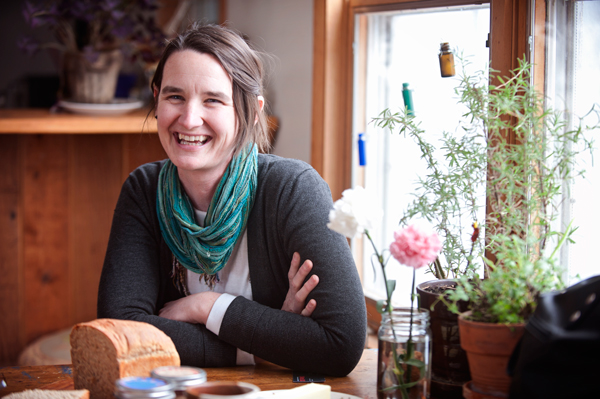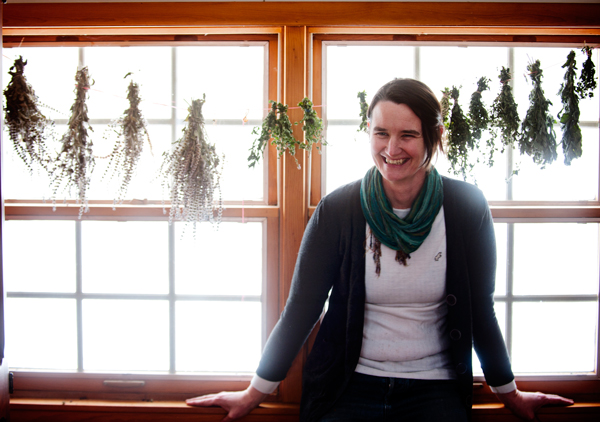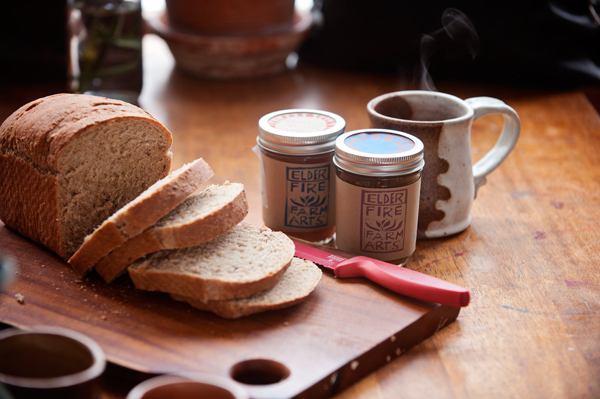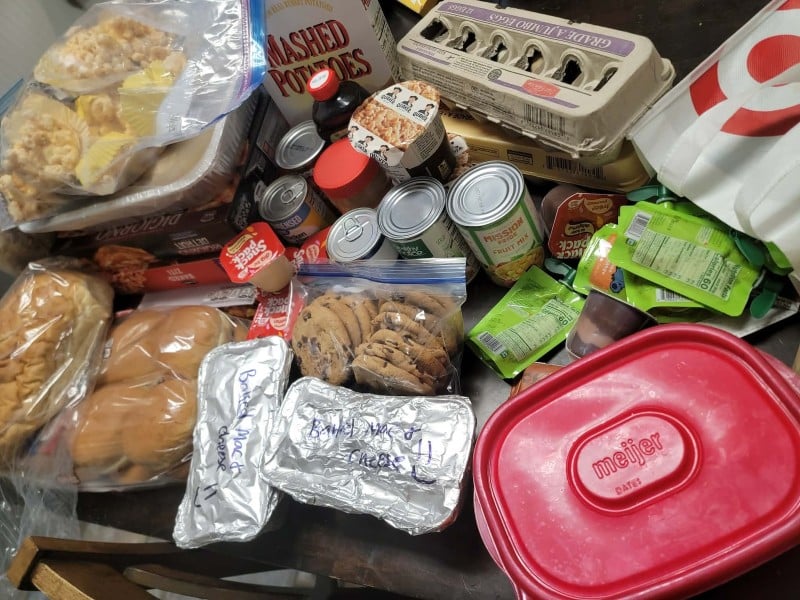One-of-a-kind jams, foraged foods keep elder fires burning
Elder Fire Farm Arts is a small, grass roots operation that says its revolutionizing the food system–through jam. Zinta Aistars talks to Heather Colburn about jams, kimchee and preserving the harvest as long as one can.
Getting your Trinity Audio player ready...
Wind your way over ever smaller and smaller roads, from asphalt onto dirt, passing herds of black and white spotted cattle, then a small barn, its boards weathered and gray, showing slices of sunlight between, then still a little farther, a little farther still, bumping along a long two-track driveway, grasses brushing the undercarriage of your car.
There. A house. Two stories built in sections around what was once a one-room cabin. Woods to one side, sloping land to the other, the garden awaiting spring thaw, and the chickens by the coop pecking the earth between clumps of stubborn snow.
This is Elder Fire Farm Arts on 10400 South Gurd Road in Barry County. To Heather Colburn and her three children, this is home.
Inside, the kitchen is fragrant with fresh baked bread. Colburn is lining up jars of jam next to the bread, cut into thick slices on a wooden board. Each jar is different, although all have the wood-cut label of Elder Fire Farm Arts. Atop each jar, handwritten, are the mystical names of the jams inside: Vanilla Ambrosia, Maiden’s Voyage, Sunset Spread, Heart of Summer, Elders’ Orchard Jelly, Tropical Melon Moon. Shelves in the kitchen are lined with more and more, and also chutneys and marmalades.
Bite in. See if you can do so without humming mmmm.
“We focus on organic and sustainable farming,” says Colburn, pulling up a chair. “Although we aren’t yet certified.” That takes a lot of time, paperwork, and funds, Colburn says, but it’s a goal. All the farming practices at Elder Fire Farm Arts, she says, qualify as organic, and the members of her CSA (community supported agriculture) who purchase shares know and trust in that.
In the warm months of gardening, the farm is sustained by the CSA shares, but in cooler months, the jars of jam, of chutneys and marmalades, along with jars of fermented kimchee, kraut, pickled turnips and various other vegetables keep the family fed and the market shelves full.
“We’re a family farm dedicated to reclaiming the farmsteading arts and keeping the fires of our elders burning by engaging in skill sharing, minimizing our reliance on industrial systems and distribution, and living well,” says Colburn.
The jams, she says, are a kind of food activism. Colburn’s “revolution” happens by rescuing food that might otherwise be thrown out or wasted. That is, she gathers what is left unsold at the farmers market, what is left behind in the garden, and what grows in the surrounding woods that can be foraged.
“It may not sound appetizing,” Colburn says, “but I am capturing waste. I am trying to preserve the harvest as long I can. Freezing is great, yes, but it uses a lot of energy. Fermentation is a little known preservation method, no heating involved, and it preserves all the vitamins and beneficial bacteria of raw vegetables.”
And jam, oh, those jams. Colburn picks berries around the farm and uses the fruits that are blemished or that get bruised in handling and begins to experiment. Her jams are the result of a playful kitchen, where she and the kids put in a little of this, a bit more of that, trying yet another variation. Try not to pick a favorite, because you may not be able to buy it again, she warns, at least not exactly that flavor.
“I do write down recipes,” she says with a grin. “But for the most part, the jams depend on what’s available. Last year, we had a lot of mulberries, so I used a lot of those. I use Pomona pectin, which allows me to use less sugar and still have the jam gel.”
Colburn attributes her interest in farming to her grandmother, the inspiration behind the name of Elder Fire Farm Arts. “My grandparents grew up on a farm, but then lived in Battle Creek; Grandma knew how to do all kinds of things. Even in the city, she walked around collecting black walnuts, she knew how to sew and do leatherwork. And make jam. When she passed away, I realized these kinds of skills are dying out. Farming is an art form. People used to know how to do whatever was needed to survive, but that’s all dying out now.”
Colburn has made it a life passion to restore the art of farming in her family and community. She worked for six years at People’s Food Co-op as grocery and merchandising manager. “I gained a lot of experience with natural foods, how to deal with vendors, and how to do marketing with my produce. Then in 2010, I left the Co-op to live on Eater’s Guild organic farm in Bangor, the second largest organic farm in the state.”
Next came a year of living in a yurt on rented farmland in Three Rivers. A yurt is a round, portable shelter made out of steam-bent pieces of wood, and it was an adventure, Colburn says, but she was ready for more permanent shelter by end of the year. She put out the word that she was looking for a farm to rent, preferably rent to own. That’s how she came to her present location in April 2012, ready to plant a flag and lots of seeds.
“Elder Fire Farm Arts had about 10 shares in our first summer here, and many of those were to people willing to work on the farm, not just pick up their share. I hope to work up to 30 shares.”
Shares for 18 weeks are $350, and produce from the farm is also available at the Bank Street Farmers Market and the 100-Mile Market at People’s Food Co-op. Along with vegetables, traditional and heirloom, Colburn sells medicinal herbs, mushrooms, and, of course, her jams and fermented concoctions.
“I’ve always been interested in food preparation and preservation,” Colburn says. “My children eat almost all of their meals here, made at home. They often help me cook and make the jams, too. Food activism is a part of our life. It means making the choice not to support industrial food systems, and understanding that real food doesn’t always look perfect like it does in a supermarket.”
All of which does add up to something like a food revolution–and the fires of her elders burning for generations to come.
Zinta Aistars is creative director for Z Word, LLC, and editor of the literary magazine,The Smoking Poet. She lives on a farm in Hopkins.
Zinta Aistars is creative director for Z Word, LLC, and editor of the literary magazine,The Smoking Poet. She lives on a farm in Hopkins.
Photos by Erik Holladay.


















